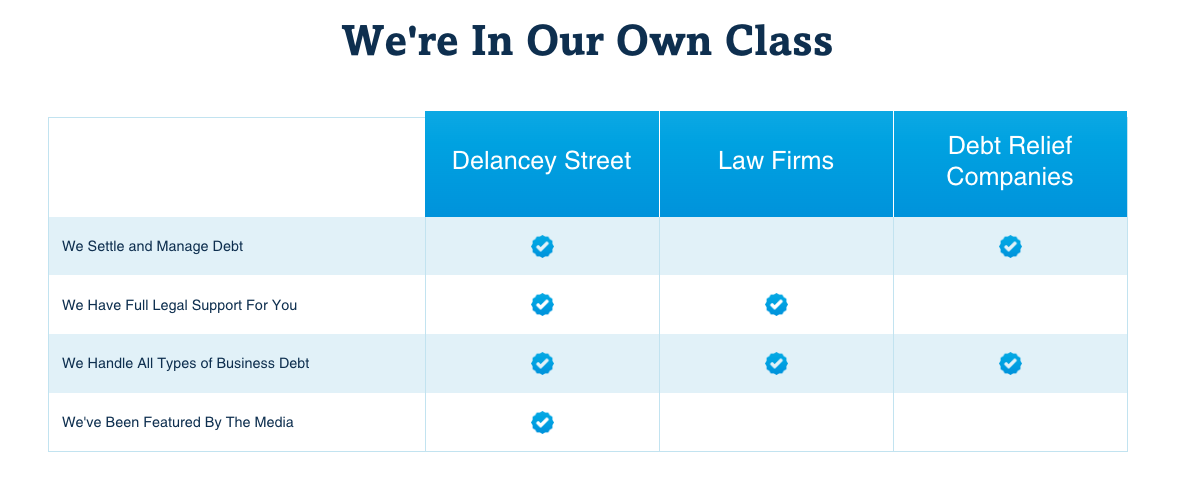Considering bankruptcy can be overwhelming, especially when your car—essential for daily life—enters the equation. Understanding the intersection between bankruptcy and vehicle ownership can help you navigate these turbulent waters with clarity. This comprehensive guide unravels how bankruptcy influences your car’s fate and explores methods to retain ownership despite financial distress.
Understanding Bankruptcy: An Overview of Impacts
Bankruptcy serves as a legal lifeline towards financial stability, yet its impacts are multifaceted. You might wonder how filing for bankruptcy reshapes your financial landscape. Bankruptcy can discharge certain debts, granting you a fresh start, but it doesn’t come without repercussions—especially on assets like your car. Your financial standing, credit score, and overall standing in the debt hierarchy undergo a significant transformation.
 -
-When you declare bankruptcy, your assets and liabilities are meticulously evaluated. This process determines which properties can be claimed by creditors or spared based on federal and state exemptions. For car owners, these exemptions play a critical role. The homestead exemption might protect your vehicle, ensuring it remains yours, but understanding its intricacies is vital.
Moreover, bankruptcy leaves a prominent mark on your credit history—lasting seven to ten years. This reflects your financial crisis but also signifies your effort towards rectifying it. While damaging, this might also facilitate a more responsible borrowing environment post-bankruptcy.
Keeping the complexity of bankruptcy in mind is essential. One has to deliberate over choices carefully to cushion against future fiscal turbulence. This decision, milestone yet daunting, demands an in-depth understanding which this guide seeks to unravel.
How Bankruptcy Affects Vehicle Ownership
You might wonder how bankruptcy impacts your vehicle ownership. Does it mean losing your car or finding a way to keep it? The truth is, the outcome hinges on the type of bankruptcy you file and your existing car loan status.
 -
-For those filing Chapter 7 bankruptcy, the liquidation process assesses all your non-exempt assets, including your car. However, many states offer motor vehicle exemptions which could allow you to retain your car, provided it falls within the defined value limit. If your car’s value exceeds the exemption, selling it to repay creditors might be unavoidable, though alternatives exist.
Unlike Chapter 7, Chapter 13 bankruptcy facilitates debt reorganization rather than liquidation. This approach typically allows you to keep your car, provided you can accommodate the repayment plan’s monthly payments. This three to five-year plan reorganizes debt, offering a structured path to retain property, including vehicles.
Securing an exemption for your car during bankruptcy depends on a myriad of factors. This includes the car’s market value, remaining loan balance, and specific state laws. Knowing these variables assists you in making informed decisions about your vehicle amidst bankruptcy proceedings.
Different Types of Bankruptcy and Their Implications
Chapter 7 and Chapter 13 dominate individual bankruptcy filings, each impacting vehicle ownership differently. The choice between these bankruptcy types is pivotal and hinges on your financial status, asset portfolio, and long-term financial goals.
Chapter 7 bankruptcy, known as "liquidation," means selling off non-exempt assets to satisfy creditor demands. Vehicles, if classified as non-exempt or valued above exemption limits, risk being liquidated. However, reaffirmation agreements or redemption can sometimes allow you to pay off a car loan at market value to keep the vehicle.
 -
-Chapter 13 bankruptcy, often referred to as "restructuring," proposes a payment plan to manage debts while retaining most or all property, including your vehicle. This method proves beneficial for those with a steady income wanting to protect significant assets from liquidation. The payment plan cycles through three to five years, ideally culminating in debt alleviation and asset retention.
Alternative bankruptcy forms, like Chapter 11 for reorganization, primarily target businesses but can apply to individuals with substantial debts exceeding Chapter 7 and 13 limits. Chapter 12, serving family farmers and fishermen, follows a structure similar to Chapter 13.
Choosing the appropriate bankruptcy route depends on your priorities—whether to immediately clear debt through liquidation or maintain a structured repayment while retaining important assets like your car. This decision significantly impacts not only your vehicle but your overall financial health.
 -
-Secured vs Unsecured Debt: Your Car Loan’s Role
At the heart of vehicular struggles during bankruptcy lies the pivotal distinction between secured and unsecured debt. Car loans fall under secured debts—backed by collateral, primarily your car. This status dictates the handling and prioritization of these loans in bankruptcy scenarios.
Secured debts position themselves uniquely in bankruptcy proceedings. If you default on a car loan, the lender retains the right to repossess the vehicle. Bankruptcy influences this dynamic, offering potential respite or demanding strategic repayment plans. Understanding your car loan ensures better navigation through tumultuous financial periods.
Contrarily, unsecured debts, unbacked by collateral, rely solely on the borrower’s promise to repay. Credit card debts or medical bills typically fall into this category. Bankruptcy can discharge most unsecured debts, offering clearer pathways to financial recovery. However, unsecured debts don’t directly tie into vehicle ownership or repossession risks.
The landscape of secured versus unsecured debts can be convoluted. Knowing whether your car loan sits among secured debts can help preemptively strategize to either protect your vehicle or understand its potential liquidation. By grasping these distinct debt types, you arm yourself with the necessary knowledge to approach bankruptcy wisely.
Reaffirmation Agreements: Keeping Your Car
One potential saving grace in Chapter 7 bankruptcy for car owners revolves around reaffirmation agreements. These agreements allow you to keep your car by reaffirming the debt, essentially agreeing to continue making loan payments under the originally agreed terms.
When entering a reaffirmation agreement, you commit to repaying the car loan despite the bankruptcy. This agreement excludes the debt from the bankruptcy discharge, meaning you remain personally liable for it. Ensuring your capability to uphold these payments is essential, as defaulting could lead to repossession outside bankruptcy protections.
Reaffirmation offers a dual advantage—retaining necessary transport and potentially improving credit as continued payments reflect positively on your history. However, these commitments bear significant weight. An inability to meet payments post-bankruptcy can set back financial stability extensively. Weighing this decision carefully is crucial.
Consider hypothetical scenarios: if continuing payments seems manageable, reaffirmation might be preferable. Conversely, if payments are unsustainable, exploring alternatives like surrendering the car debt-free can prevent exacerbated financial strain. Keeping your car during bankruptcy necessitates informed, deliberate decisions where reaffirmation could provide vital relief.
Navigating Car Repossession during Bankruptcy
Repossession, a frightening possibility during bankruptcy, heightens anxiety around vehicle ownership. Yet understanding the processes and legalities can illuminate ways to navigate this potential predicament. Proactively managing repossession risks means equipping yourself with knowledge and strategy.
Filing for bankruptcy instigates an automatic stay—temporarily halting repossession and debt collection. This period offers crucial breathing room to evaluate whether reaffirmation, redemption, or even surrendering the vehicle aligns with your financial capability and future goals.
Resisting the impulse to surrender a car uncontested aids in deliberate decision-making. Is it financially feasible to redeem the car by paying its current market value in one lump sum? This option contrasts strikingly with regular loan payments but can ultimately restore vehicle ownership and sidestep costly compounding interest rates.
In hypothetical scenarios where repossession seems imminent despite bankruptcy, discussing alternatives with your attorney is invaluable. Strategizing around potential defenses, evaluating whether repossession breaches automatic stay conditions or considering state-specific exemptions could change the game’s outcome. Ultimately, informed decisions and a proactive approach in the face of possible repossession ensure you navigate this challenging terrain with clarity.
Bankruptcy encompasses a maze of decisions and implications, particularly around vehicle ownership. By diving deep into your specific bankruptcy type, evaluating debt classifications, contemplating reaffirmation agreements, and preparing for potential repossession, you position yourself with the best chance to retain essential assets. Though the process is intricate, informed and deliberate decisions stemming from true understanding steer your financial recovery with resilience and hope.
Summary of Key Points
| Key Concept | Explanation |
|---|---|
| Chapter 7 Bankruptcy | Involves liquidation of assets. Car might be sold if not exempted. Reaffirmation agreements can help keep the car. |
| Chapter 13 Bankruptcy | Reorganization of debts. Typically allows retention of car with structured repayment plan. |
| Secured Debts | Loans backed by collateral (car loans). Lenders can repossess assets if defaults occur. |
| Unsecured Debts | Loans not backed by collateral (credit card debts). Do not directly impact car ownership but may be discharged in bankruptcy. |
| Reaffirmation Agreements | Agreement to continue paying on a car loan despite bankruptcy, keeping the vehicle but remaining liable for payment. |
| **Repossession and Bankruptcy | ** Filing for bankruptcy triggers an automatic stay halting repossession. Evaluating alternatives like redemption can mitigate repossession risks. |
By understanding these key points, you equip yourself to maneuver through bankruptcy with a decisive, informed mindset, safeguarding essential assets like your car while fostering effective financial recovery.







